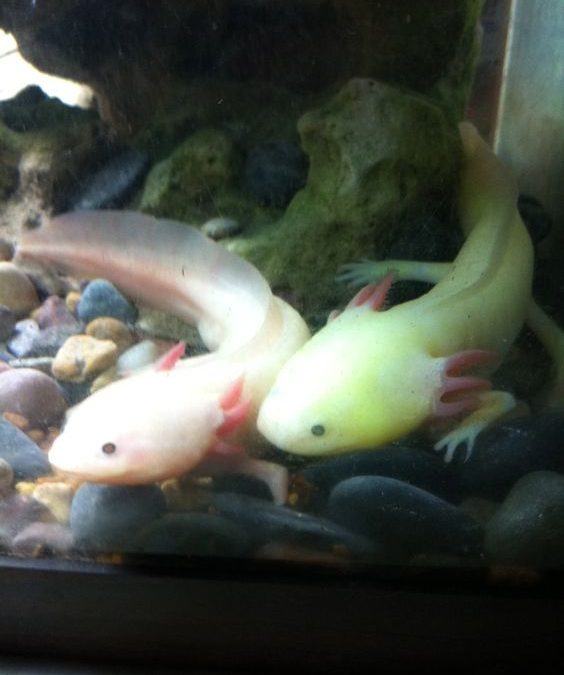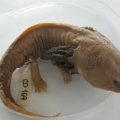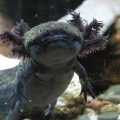Endemic in a single secluded lake in Mexico City called Lake Xochimilco, axolotls are one of the most fascinating works of nature. This animal belongs to the family of salamander, but unlike most salamanders, that dwells on land when reaching sexual maturity, they stay on their larval state, and stay underwater throughout their lifetime. With this, axolotls keep their tails and fancy gills, which looks like a funky headdress in both sides of its head. In ancient times, Axolotls were eaten by Aztecs as part of their diet.
But like other salamanders, axolotls can regrow their limbs and even organs. Scientists call it cellular regeneration, which allows the animals not just to repair damages sustained from injuries, but also regenerate body parts, growing them back without any signs of the injury. Yes, you read it right, no sign of amputation such as scars. Fascinatingly, they can regenerate more than 100 times and still regrow body parts perfectly, as if nothing happened.
Axolotls possess cartilaginous skeleton, that even in fully-grown and older ones don’t calcify.
Axolotl’s Development and Reproduction
Axolotls can breed at 12 months of age.
Determining the sex of axolotls can be difficult, unless both genders are present to compare. For the male, their intestine’s external opening (called cloaca) is larger and visually looks more swollen on its margins. Also, male axolotls have narrower heads and longer tails.
Spring is the natural breeding season for axolotls. Water temperature and length of the day are two important factors that influence their breeding.
Female axolotls may release around 300 up to 1100 eggs in a single spawn.
Axolotl eggs are gelatinous in texture, and will naturally stick to any surface, even on the tank.
For the axolotl eggs to develop on normal rate, the water should have a steady level of oxygen.
Young axolotls, such as those 10cm or smaller in size, may show cannibalistic tendencies and eat each other. Thus, they are usually kept in separate tanks. They can however, last ten to even twelve years.
Fascinating Facts About Axolotl
Axolotls are basically amphibians, with a remarkable trait that scientists call neoteny. This is the ability to remain in juvenile form. Other amphibians such as frogs, get rid of their gills and tails from their tadpole form and develop legs and lungs so they can dwell on land. Axolotls on the other hand, also develop both legs and lungs, but they get to keep their gills and tails. They can basically breathe air, and use their legs to walk, they just prefer to do it underwater. Young axolotls walk around and allow their gills to filter oxygen from the water, while the adult ones can simultaneously breathe with their lungs and even through their skin.
They excrete more than 50% of their waste as weak urine, the rest of their waste are excreted through their gills.






 Author and long-time animal lover. Sharing knowledge on pet care through experience and the written word.
Author and long-time animal lover. Sharing knowledge on pet care through experience and the written word.